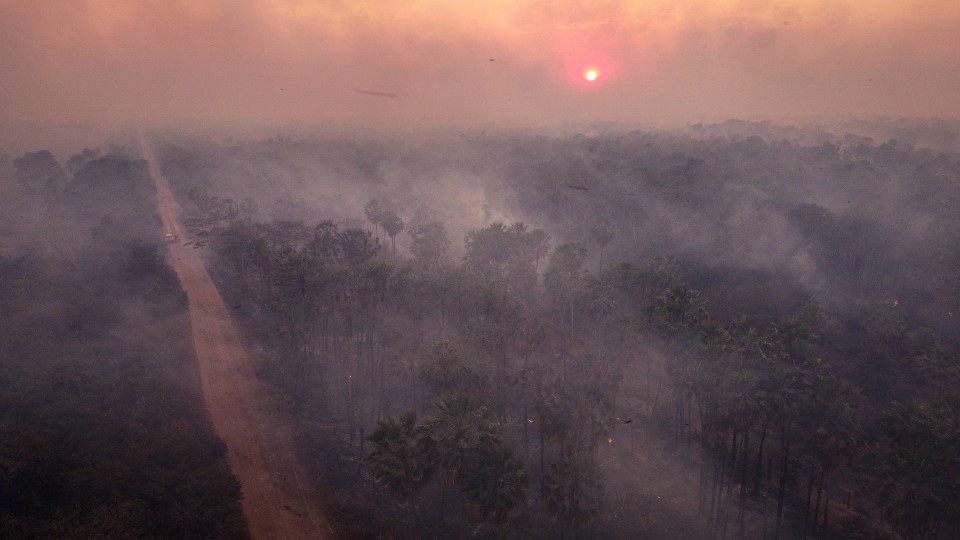Record-setting emissions from wildfires in South America

Central regions of South America have seen widespread wildfires in August and September, with devastating effects. The fires have led to an extraordinary increase in carbon dioxide emissions and a worsening of air quality, the EU’s Copernicus Atmosphere Monitoring Service (CAMS) reported on Friday.
Fires in the Pantanal and the Amazon region were the main contributors to the poor air quality. In the second half of July, the number of fires in Brazil’s Amazon region and in Bolivia rose significantly, as did emissions throughout the region, CAMS reported. The smoke plume extended from Ecuador to São Paulo.
Mark Parrington, Senior Scientist at CAMS, said: “The smoke transport has had an impact far beyond the vicinity of where the fires have been burning, even reaching across the Atlantic.”
Historic levels of air pollution
So far this year in Brazil, CAMS estimates that roughly 183 megatons of carbon dioxide have been released into the atmosphere. That number exceeds the average for emissions over the last 22 years. In September alone, more than 60 megatons have been released. Total emissions are at a level similar to the record-high amount measured in 2007.
In most Brazilian states covering parts of the Amazon region, carbon dioxide emissions from wildfires were in line with the average until early August. Since then, however, they have surpassed these levels. In Amazonas and Mato Grosso do Sul, estimated carbon dioxide emissions from July through September are higher than any recorded by CAMS over the past 22 years.
The wildfires in Bolivia this year have also broken records: by mid-September carbon dioxide emissions had already reached 76 megatons – the previous high mark of 73 megatons was for the entire year of 2010. September 2024 alone saw the release of 32 megatons of carbon dioxide.
Record wildfire activity
According to CAMS Senior Scientist Parrington, “the wildfire activity in South America has been markedly above average, especially in the Amazon region and in the Pantanal wetlands.” Brazil’s Pantanal region is the largest inland wetland in the world. The first half of the year saw the worst fires ever recorded in the region. The seasonally recurring fires began significantly earlier this year and have been far greater in scope than usual.
The causes, according to CAMS, are the extremely high temperatures over the past few months in South America, long-term drought as indicated by low soil moisture, and “other climatological factors.”
Wildfire season in Brazil lasts from June to October. Traditionally farmers use fires to clear patches of forest for grazing. If the fires get out of control, the result can be massive wildfires. Many fires are set illegally.
The Copernicus Atmosphere Monitoring Service of the European Union monitors wildfires and their emissions through satellite observations of active blazes. Carbon dioxide emissions are estimated based on the intensity of the fires. (hcz)